Photo: Christopher Polk/Getty Images
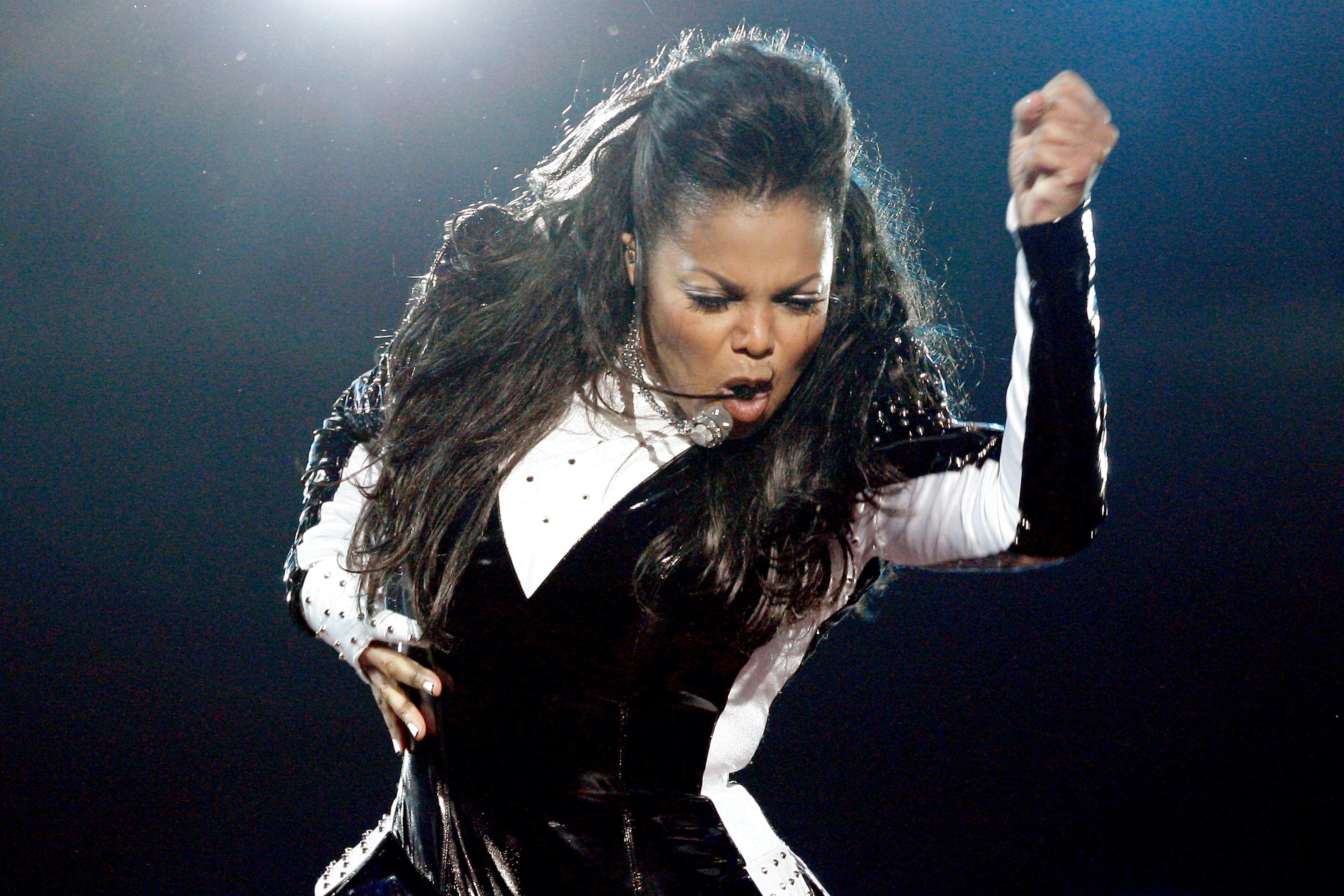
Janet Jackson
news
Recordings By Janet Jackson, Louis Armstrong, Odetta & More Inducted Into The National Recording Registry
Selections by Albert King, Labelle, Connie Smith, Nas, Jackson Browne, Pat Metheny, Kermit the Frog and others have also been marked for federal preservation
The Librarian of Congress Carla Haden has named 25 new inductees into the National Recording Registry of the Library of Congress. They include Janet Jackson’s “Rhythm Nation 1814,” Louis Armstrong’s “When the Saints Go Marching In,” Labelle’s “Lady Marmalade,” Nas’ “Illmatic,” Kool & the Gang’s “Celebration,” Kermit the Frog’s “The Rainbow Connection” and more.
“The National Recording Registry will preserve our history through these vibrant recordings of music and voices that have reflected our humanity and shaped our culture from the past 143 years,” Hayden said in a statement. “We received about 900 public nominations this year for recordings to add to the registry, and we welcome the public’s input as the Library of Congress and its partners preserve the diverse sounds of history and culture.”
The National Recording Preservation Board is an advisory board consisting of professional organizations and experts who aim to preserve important recorded sounds. The Recording Academy is involved on a voting level. The 25 new entries bring the number of musical titles on the registry to 575; the entire sound collection includes nearly 3 million titles. Check out the full list of new inductees below:
National Recording Registry Selections for 2020
-
Edison’s “St. Louis tinfoil” recording (1878)
-
“Nikolina” — Hjalmar Peterson (1917) (single)
-
“Smyrneikos Balos” — Marika Papagika (1928) (single)
-
“When the Saints Go Marching In” — Louis Armstrong & his Orchestra (1938) (single)
-
Christmas Eve Broadcast--Franklin D. Roosevelt and Winston Churchill (December 24, 1941)
-
“The Guiding Light” — Nov. 22, 1945
-
“Odetta Sings Ballads and Blues” — Odetta (1957) (album)
-
“Lord, Keep Me Day by Day” — Albertina Walker and the Caravans (1959) (single)
-
Roger Maris hits his 61st homerun (October 1, 1961)
-
“Aida” — Leontyne Price, et.al. (1962) (album)
-
“Once a Day” — Connie Smith (1964) (single)
-
“Born Under a Bad Sign” — Albert King (1967) (album)
-
“Free to Be…You & Me” — Marlo Thomas and Friends (1972) (album)
-
“The Harder They Come” — Jimmy Cliff (1972) (album)
-
“Lady Marmalade” — Labelle (1974) (single)
-
“Late for the Sky” — Jackson Browne (1974) (album)
-
“Bright Size Life” — Pat Metheny (1976) (album)
-
“The Rainbow Connection” — Kermit the Frog (1979) (single)
-
“Celebration” — Kool & the Gang (1980) (single)
-
“Richard Strauss: Four Last Songs” — Jessye Norman (1983) (album)
-
“Janet Jackson’s Rhythm Nation 1814” — Janet Jackson (1989) (album)
-
“Partners” — Flaco Jiménez (1992) (album)
-
“Somewhere Over the Rainbow”/”What A Wonderful World” — Israel Kamakawiwo’ole (1993) (single)
-
“Illmatic” — Nas (1994) (album)
-
“This American Life: The Giant Pool of Money” (May 9, 2008)
<style>.embed-container { position: relative; padding-bottom: 56.25%; height: 0; overflow: hidden; max-width: 100%; } .embed-container iframe, .embed-container object, .embed-container embed { position: absolute; top: 0; left: 0; width: 100%; height: 100%; }</style><div class='embed-container'><iframe allow='autoplay *; encrypted-media *; fullscreen *' frameborder='0' height='450' style='width:100%;max-width:660px;overflow:hidden;background:transparent;' sandbox='allow-forms allow-popups allow-same-origin allow-scripts allow-storage-access-by-user-activation allow-top-navigation-by-user-activation' src='https://embed.music.apple.com/us/playlist/national-recording-registry-class-of-2020-inductees/pl.u-d2b05gLILrLNv4b'></iframe></div>
Learn To Make Beats With Library Of Congress' New Digital DJ Tool
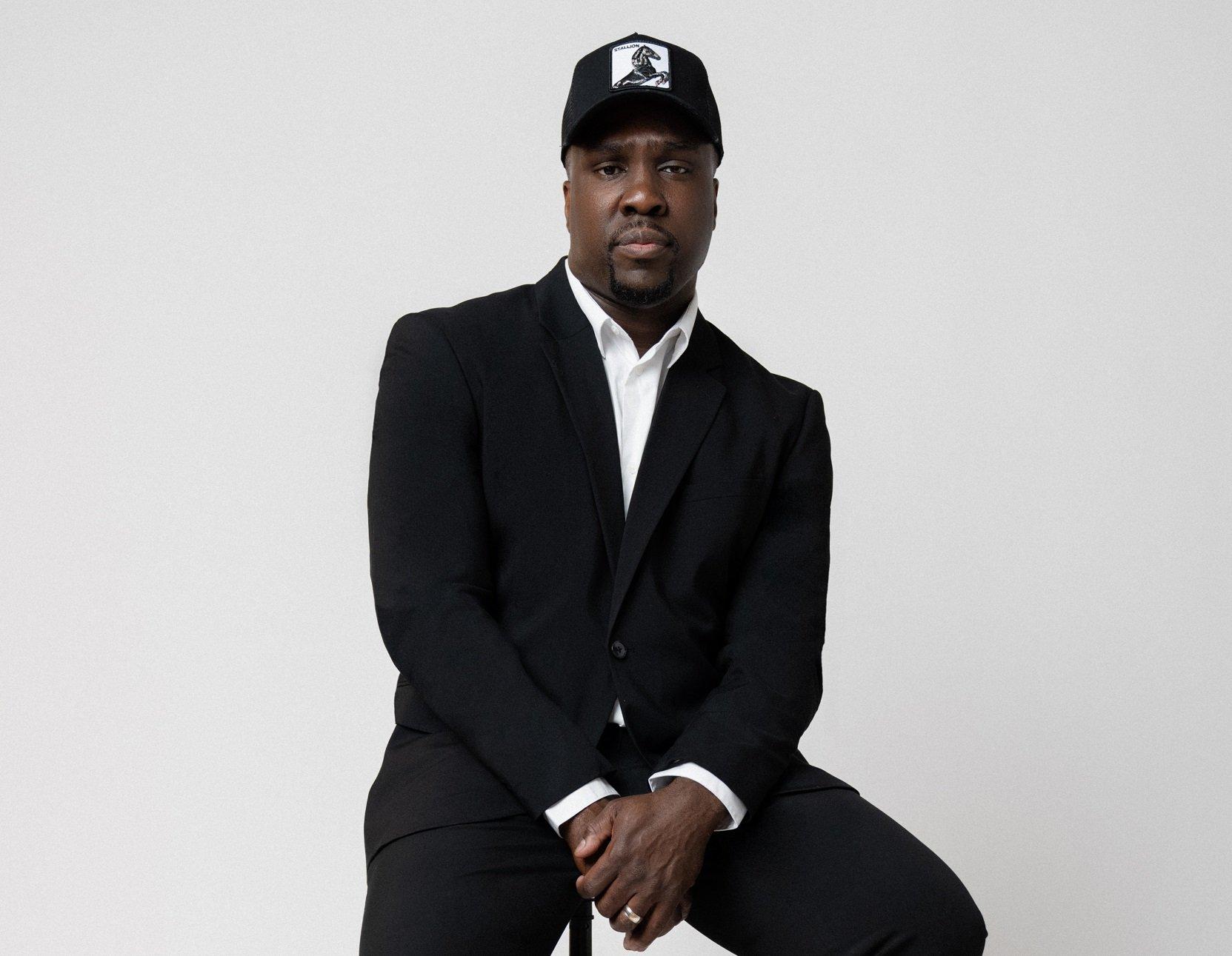
Photo: Oye Diran
interview
Meet Derrick Hodge, The Composer Orchestrating Hip-Hop's Symphony
From Nas' 'Illmatic' to modern hip-hop symphonies, Derrick Hodge seamlessly bridges the worlds of classical and hip-hop music, bringing orchestral elegance to iconic rap anthems.
Over the last 50 years, hip-hop culture has shown it can catalyze trends in fashion and music across numerous styles and genres, from streetwear to classical music. On June 30, Nas took his place at Red Rocks Amphitheater in a full tuxedo, blending the worlds of hip-hop and Black Tie once again, with the help of Derrick Hodge.
On this warm summer eve in Morrison, Colorado, Nas performed his opus, Illmatic, with Hodge conducting the Colorado Symphony Orchestra. The show marked a belated 30-year celebration of the album, originally released on April 19, 1994.
As Nas delivered his icy rhymes on classics like "N.Y. State of Mind," "Memory Lane (Sittin' in da Park)," and "Halftime," the orchestra held down the beat with a wave of Hodge's baton. The winds, strings, and percussion seamlessly transitioned from underscoring Nas's lyrics with sweeping harmonic layers to leading melodic orchestral flourishes and interludes. For the album's final track, "Ain't Hard to Tell," the orchestra expanded on Michael Jackson's "Human Nature," expertly sampled originally by producer Large Professor.
Derrick Hodge is a pivotal figure in modern music. His career spans writing and performing the famous bassline on Common's "Be," composing for Spike Lee's HBO documentary "When the Levees Broke: A Requiem in Four Acts," and his own solo career that includes his latest experimental jazz album, COLOR OF NOIZE. Hodge also made history by bringing hip-hop to the Kennedy Center with orchestra accompaniments for Illmatic to celebrate the album's 20th anniversary in 2014.
"That was the first time hip-hop was accepted in those walls," Hodge says sitting backstage at Red Rocks. It was also the first time Hodge composed orchestral accompaniments to a hip-hop album.
Since then, Hodge has composed symphonic works for other rappers including Jeezy and Common, and is set to deliver a symphonic rendition of Anderson .Paak's 2016 album, Malibu, at the Hollywood Bowl in September.
Hodge's passion for orchestral composition began when he was very young. He played upright bass by age seven and continued to practice classical composition in his spare moments while touring as a bassist with Terence Blanchard and Robert Glasper. On planes. In dressing rooms. In the van to and from the gig.
"It started as a dream. I didn't know how it was going to be realized. My only way to pursue that dream was just to do it without an opportunity in sight," Hodge says. "Who would've known that all that time people were watching? Friends were watching and word-of-mouth."
His dedication and word-of-mouth reputation eventually led Nas to entrust him with the orchestral arrangements for Illmatic. He asked Hodge and another arranger, Tim Davies, to write for the performance at the Kennedy Center.
"[Nas] didn't know much about me at all," Hodge says. "For him to trust how I was going to paint that story for an album that is very important to him and important to the culture, I have not taken that for granted."
Read more: How 'Illmatic' Defined East Coast Rap: Nas’ Landmark Debut Turns 30
Those parts Hodge wrote for the Kennedy Center are the same parts he conducted at Red Rocks. Over a decade later, he channels the same drive and hunger he had when he was practicing his compositions between gigs. "I hope that I never let go of that. I feel like these opportunities keep coming because I'm approaching each one with that conviction. Like this could be my last."
Before this latest performance, GRAMMY.com spoke with Hodge about bridging the worlds of classical and hip-hop, influencing the next generation of classical musicians, and how his experience as a bassist helps him lead an orchestra.
Throughout history, orchestral music has been celebrated by the highest echelons of society, whereas hip-hop has often been shunned by that echelon. What is it like for you to bring those two worlds together?
I love it. I've embraced the opportunity since day one. I was a young man showing up with Timberlands on and cornrows in my hair, and I knew the tendency to act and move in a certain perception was there. I knew then I have to represent hope in everything I do. I choose to this day to walk with a certain pair of blinders on because I feel like it's necessary. Because of that I never worry about how the classical world perceives me.
Oftentimes I'll stand before them and I know there may be questions but the love I show them, what I demand of them, and how I show appreciation when they take the music seriously…almost every situation has led to lifelong friendships.
I believe that's been part of my purpose. It's not even been to change minds or change perceptions. In serving the moment, even when people have preconceptions, they're in front of me playing music I wrote. How do I serve them best? How do I bring out the best in them just like I'm trying to bring out the best in the storyline of a hip-hop artist that may not relate to their story at all? The answer is just to be selfless. That's eliminated the distraction of trying to convince minds.
With that unifying principle, would you consider conducting the orchestra the same thing as playing bass with Robert Glasper?
The way I try to be selfless and serve the moment, it's no different. Maybe the skillset that's required. For example, conducting or working within a framework of composed music requires a certain way of making sure everybody's on the same page so we can get through these things on time and keep going. But I serve that moment no differently than when myself and Robert Glasper, Chris Dave, Casey Benjamin RIP, are creating a song in the moment.
I actually don't even think about how one thing is affecting the other. I will say the beauty of the bass and the bassists that have influenced me — from Ron Carter to the great Marcus Miller, Victor Wooten — is the way they can stand out while never abandoning the emotion of the moment. Remembering what is perceived as the role of the bass and how it glues things in a unique way. Harmonically and rhythmically. Being aware of the responsibility of being aware of everything.
I think that's one thing that's carried over to orchestrating and thinking about balances and how to convey emotion. I think some things are innate with bassists. We're always navigating through harmony and having a conversation through a lens of placement with drums. Placement with the diction if they're singers or rappers. There are a lot of decisions bass players are making in the moment that we don't even think about. It's just secondhand. But it's how are we serving what's necessary to make the conversation unified. I think that's one thing that's served me well in composition.
What's one song you're particularly excited to dive into for the Anderson .Paak arrangements?
So I'm intentionally not thinking in that way because we decided to treat it like a movie. Start to finish no matter what. With that in mind, I'm trying to approach it as if the whole thing is an arcing story because I didn't realize the succession of how he placed that record was really important to him.
**Hip-hop is often a very minimalist genre while an orchestra is frequently the opposite with dozens of instruments. How do you maintain that minimalist feel when writing orchestra parts for hip-hop albums like Illmatic?**
I'm so glad you asked that because that was the biggest overarching thing I had to deal with on the first one. With Nas. Because Illmatic, people love that as it is. Every little thing. It wasn't just the production. Nas's diction in between it, how he wrote it, how he told the story, and the pace he spoke through it. That's what made it. So the biggest thing is how do I honor that but also try to tell the story that honors the narrative of symphonic works? [The orchestra is] fully involved. How do I do things in a way where they are engaged without forcing them?
Illmatic was a part of my soundtrack. So I started with the song that meant the most to me at that time: "The World is Yours." That was the first piece I finished, and I emailed Pete Rock and asked "How is this feeling to you?" If the spirit of the song is speaking to him then I feel like this is something I can give to the people no matter how I feel about it. And he gave the thumbs up.
So instead of overly trying to prove a point within the flow of the lyrics, how do we pick those moments when the orchestra is exposed? Let them be fully exposed. Let them tell a story leading into that. Make what they do best marry well into what Nas and the spirit of hip-hop and hip-hop sampling do best. And then let there be a dance in between.
That first [Illmatic] show was a great experiment for me. I try to carve out moments whenever I can. Let me figure out what's a story that can combine this moment with this moment. That's become the beauty. Especially within the rap genre. To let something new that they're not familiar with lead into this story.
*Derrick Hodge conducts the Colorado Symphony Orchestra at Red Rocks* | Amanda Tipton
The orchestra is just as excited to play it as Nas is to have them behind him.
And that reflects my story. I try to dedicate more time to thinking about that, and that normally ends up reciprocated back in the way they're phrasing. In the way they're honoring the bowings. In the way they're honoring the breaths that I wrote in for them. They start to honor that in a way because they know we're coming to try and have a conversation with these orchestras. That's one thing I try to make sure no matter what. It's a conversation and that goes back to the moment as well.
I've seen other composers put an orchestral touch on hip-hop in recent years. For example, Miguel Atwood-Ferguson wrote orchestral parts to celebrate Biggie's 50th birthday. Would you say integrating an orchestra into hip-hop is becoming more popular?
It has become popular, especially in terms of catching the eyes of a lot of the different symphonies that might not have opened up their doors to that as frequently in the past. These opportunities — I appreciate the love shown where my name is mentioned in terms of the inception of things. But I approach it with a lot of gratitude because others were doing it and were willing to honor the music the same. There are many that wish they had that opportunity so I try to represent them.
With these more modern applications of orchestral music, I feel like there will be an explosion of talent within the classical realm in the next few years. Kids will think it's cool to play classical again.
The possibility of that just brings joy to me. Not just because it's a spark, but hopefully the feeling in the music they relate to. Hopefully there is something in it, aside from seeing it done, that feels that it relates to their story. I have confidence if I'm true to myself, hopefully, each time in the music it's going to feel like it's something relevant to the people. The more I can help foster platforms where people are free to be themselves, and where they can honor the music—I hope that mentality becomes infectious.
More Rap News

Ice Spice Is The Drill Queen On 'Y2K!': 5 Takeaways From Her Debut Album

Watch Young MC Win Best Rap Performance In 1990

On Rakim's 'G.O.D's Network (REB7RTH)' The MC Turned Producer Continues His Legacy With An All-Star Cast

5 Ways Mac Dre's Final Living Albums Shaped Bay Area Rap

Denzel Curry Returns To The Mischievous South: "I've Been Trying To Do This For The Longest"
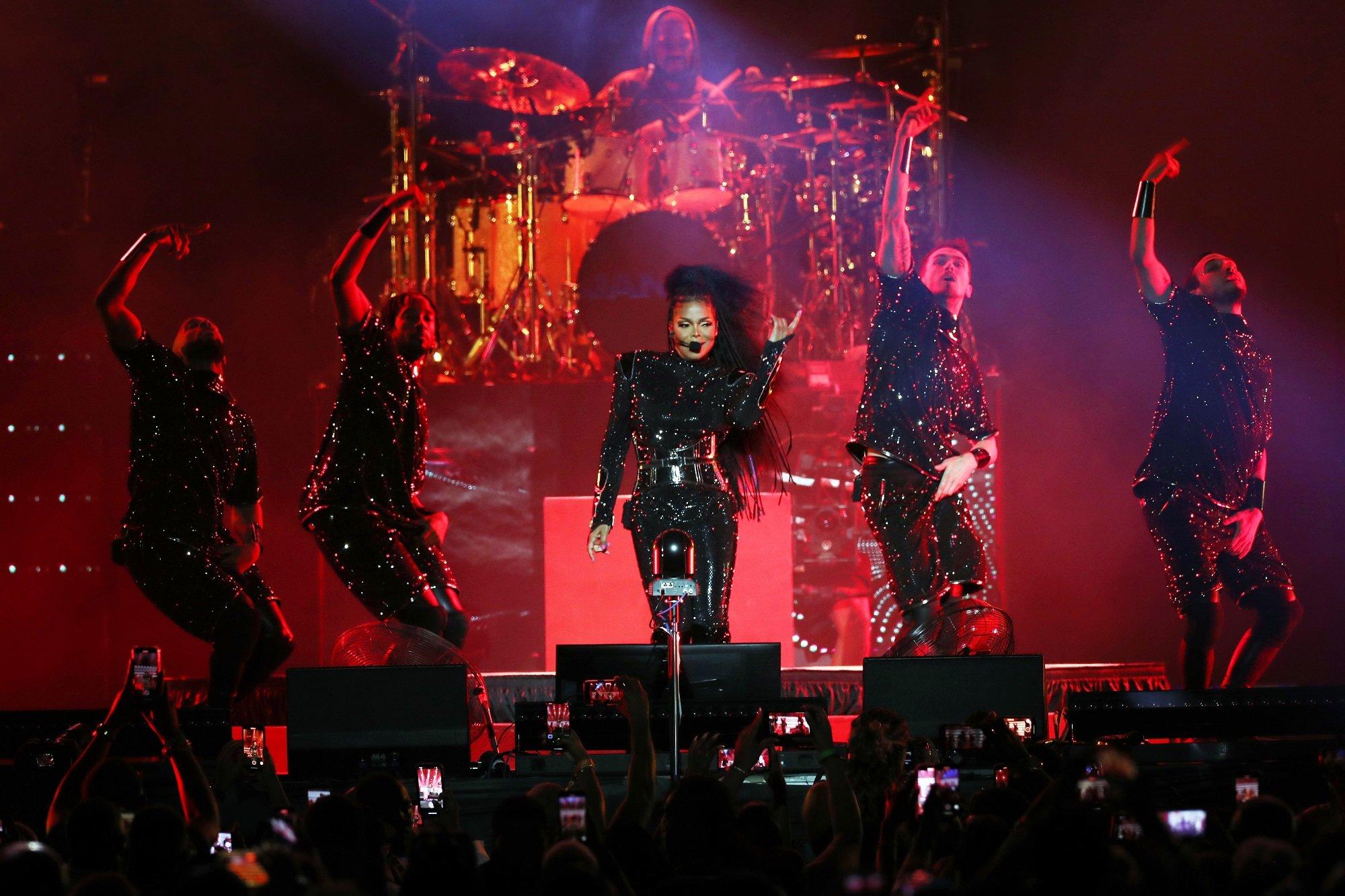
Photo Credit: Bennett Raglin/Getty Images for Essence
interview
Celebrating 30 Years Of Essence Fest: How New Orleans & Multi-Generational, Diasporic Talent Create The "Super Bowl Of Culture"
Ahead of the 30th Essence Festival Of Culture, held July 4-7 in New Orleans, GRAMMY.com spoke with executives and curators of the legendary celebration of Black excellence.
Every July, millions of Black people, specifically Black women, descend upon New Orleans for the Essence Festival of Culture (EFOC). Known for many years as the Essence Festival, the festival is a celebration of Black culture, community, and heritage. Since its inception in 1995 as a one-off event to commemorate the publication’s 25th anniversary, the festival has evolved into a diasporic jubilee, drawing in people of African descent from across the diaspora.
In addition to its global presence, the festival pours millions of dollars into the local New Orleans community, which has served as the festival's home for 30 years (with the exception of 2006, when the festival was held in Houston, because of Hurricane Katrina). In 2020, the festival was canceled because of the COVID-19 pandemic. Despite this, the annual festival continues to be one of the most sought-after and attended festivals in the United States.
This year’s Essence Festival of Culture will be held at the Superdome from July 4-7, replete with legendary and fast-rising talents. On July 5, Birdman & Friends will celebrate the 30th anniversary of Cash Money Records. The following day will feature a special performance by Charlie Wilson, while Usher will commemorate the 20th anniversary of Confessions.
Janet Jackson and Victoria Monét will headline the festival's final night, while Frankie Beverly and Maze close out the festival with the return of All-White Night. Other performers include The Roots featuring Mickey Guyton, Ari Lennox and T-Pain, Busta Rhymes, Raphael Saadiq, D-Nice featuring Shelia E, Big Boi, and many more.
Read more: Music Festivals 2024 Guide: Lineups & Dates For Lollapalooza, Coachella, Bonnaroo & Much More
EFOC has been compared to SXSW, Coachella, Austin City Limits, and other notable festivals, yet it stands out for its empowerment-centered approach. It is not simply a festival, it is a family reunion. The one festival in the United States that does not pander to or take advantage of Black audiences, but truly celebrates them and their achievements. Although music has always been an integral part of the festival’s ethos — Aretha Franklin and B.B. King performed at the first iteration — the festival excels in its multi-generational and interdisciplinary programming. On any given day, attendees can attend sessions on Black entrepreneurship, politics, mental health, and literature, as well as seminars focused on issues impacting the Black community.
There’s a reason why the festival is referred to as the party with a purpose. For decades, it has operated as a celebratory convening place for Black people, Black families, and Black communities. Now, more than ever, spaces like EFOC are needed, as the Black community experiences an onslaught of changes — from Historically Black Colleges and Universities in North Carolina and Tennessee being subject to intense government oversight, to Black women-owned venture capital firms being targeted by conservatives, and Black voting rights becoming at risk during an election year.
Ahead of the festival’s 30th celebration, Michael Barclay, Executive Vice President of Experiential for ESSENCE Ventures and Barkue Tubman Zawolo, Chief of Staff, Talent and Diasporic Engagement for Essence Ventures, spoke to the Recording Academy about the history, legacy, and future of the Essence Festival of Culture.
This interview has been edited for clarity.
Are you part of the generation that grew up with the Essence Festival of Culture? If so, how does it feel to be a part of it?
Barkue Tubman Zawolo: I'm originally from Liberia. And even being in Liberia, prior to my family moving to the U.S. in 1980, Essence was always a thing for my mom and my aunts. When we came here, fast forward to me, as an adult, [after] graduating college, I got into the music industry. I've managed artists that have gone through the Essence stages and pages in different ways.
Essence Fest has always been something that we were familiar with. I have to say, I had not really experienced Essence Fest until 2019 when Essence was actually a client. One of the things that I was doing [at that point] was integrating the Diaspora and African creatives within the festival in fashion and music.
To be in the role that I'm in right now and to be on a team with people who have been a part of Essence for a long time…. Essence seems to be ingrained in all of our fabric. [What] started as a music festival now is the Super Bowl of Culture that is the Essence Festival of Culture. To be on the team that helps bring this to life for our community is a daunting but rewarding task all in the same.
Essence is something that I don't think anybody in our community takes lightly. Even our partners understand the value of it. We certainly understand that we serve the Essence-inverse and, and we are in service to this community. It is a huge honor to be able to be a part of the team that brings this to life and, and, and constantly hear what it means to the community globally too.
One thing that I admired, especially about last year's festival, was GU Kickback — a music event hosted by Girls United, the publication’s Gen Z vertical. I saw a number of local artists from New Orleans, such as 504ICYGRL. ESSENCE just released a series of cover stories celebrating the 30 year relationship between the publication and New Orleans; how do you highlight the city and their history?
Michael Barclay: As somebody who's worked in experiential, creating gatherings and experiences for almost 25 years now, the venue is always important when you're trying to set the box where you are creating for your community, for your audience. New Orleans has been that backdrop for us for almost 30 years now.
New Orleans is the convergence of our mission, our brand, in a city that is perfectly matched for that energy. New Orleans is as much a part of Essence Festival of Culture as Essence Magazine is to Essence Festival.
It is very much a partnership that has created this cultural movement. To be more inclusive, and highlight more of those local relationships and talent is very intentional. It has been something that we have put a lot of energy and effort into over the last couple of years.
This will be my third festival this year. I think Barkue, you started maybe a year or two before me. We're a fairly new crew that is working to help grow and reshape and solidify those relationships. Even with how we handle the management of the festival.
Our VP of Essence Festival, Hakeem Holmes is a hometown boy from New Orleans. He's the pride and joy. They love to see him coming. He's always enlightening us on the things that we need to be focused on for the city and how we make the best partnership and make the best impact on the area.
It was intentional what you saw last year. It's intentional this year. We dedicated our entire festival edition of the magazine as a love letter to New Orleans. It's a symbiotic relationship that is one of the key reasons why this festival is the Super Bowl of Culture.
I would love to hear about the talent aspect of the festival. Last year, Megan Thee Stallion headlined. In previous years, Beyoncé and Prince have served as headliners. What is the formula between balancing local talent, national talent and diasporic talent at the festival?
Zawolo: As we grow the festival, the intentionality becomes even more and more important. And, what we do in understanding where we are as a brand.
We're 30 years into the festival, the brand is 55 years. What's traditionally known as the Essence Woman is now bringing her daughter. It's multi-generational. We also know that the world is as big as your cell phone, so people are now exposed to different types of content and music.
We see the influence of Afrobeats and Caribbean music. We are intentional about making sure that every night really speaks to multiple generations, but it's anchored in a generation. It's like, who's bringing, who to the concert on Friday? Is it the daughter bringing her mama?
It's anchored in that younger demo, but we're going to make sure that they're going to have a collective good time there. Saturday is usually our heaviest night. We have our living legends that show up there; that really cuts across generations. This is anybody can bring anybody, but let me tell you, you're going to be able to teach each other, connect with each other with the different groupings of talent that we have.
We try to make sure that there is something that speaks to us, but that that connects with the diaspora on as many nights as possible. Sometimes it's not because they're from a different country, but because we know the music also resonates.
If you think of Janet Jackson, you can go anywhere in the world. She can check off that box, although she's not from there. You can create those ties, but we also are intentional about having Ayra Starr and Machel Montano. Last year we had Tems and Wizkid. The goal is to continue to grow what that looks like, because we are a global brand and that is our diasporic and global intent in connecting the global Black community is really important.
We are intentionally multi-generational. We intentionally lead into where a multitude of generational communities can come together and have fun together. There is something for everybody. We have a unique opportunity with Essence as the brand grows to be able to not only speak to what they want to call the aunties, I call the punties. I also think that this is where we get to educate the next generation on where we're coming from. We also get to learn from them on where they are and where they want to go.
What a beautiful way to kind of tie all of these connections. Last year, the festival celebrated 50 years of hip-hop; this year you're celebrating the 30th anniversary of the festival. What is the intention behind this year’s music programming?
Zawolo: Paying homage to people who had done some historical things on our stages. We have Janet [Jackson] back. People are like, “Oh, we saw Janet two years ago,” but Janet is also one of the highest sellers in the festival's history.
If we're going to celebrate, let's celebrate, because we know Janet never disappoints. We also want to lean into some of the [older] talent, like Charlie Wilson, Uncle Charlie. He's graced that stage so many times, but yet it's still very relevant. Using this moment to reignite things that we've done in the past and bring them back to life that we know the audience missed.
Frankie Beverly, who is going to come, this is probably going to really be his last performance. The passing of the torch. This year was about having to be intentional about what other milestones are happening that are important to this culture. Cash Money is also celebrating 30 years. Who better, right?
Essence has been in New Orleans for 30 years. Cash Money and crew are from New Orleans. Juvenile just got the key to the city from the mayor. We want to honor and celebrate him, but we also want to recognize the influence that this group of very creative, entrepreneurial, rappers and artists have had on culture, because there was a time where we all were backing that ass up.
Making sure we highlighted milestones, connecting with people who have historically been a part of making history with us, introducing some new ones — that's what we have to do. We have to set up now for the next 30 years. We want to go to the soul of what appeals to our audience, and we're really all about good music.
I think the 30th year just continues to do what we do. As we look to grow and connect demos, Megan Thee Stallion is a very viable option because again, the daughter now is going to bring the mama. Intergenerational diasporic and connecting demos, I think that only happens at the Superdome. That's also happening in the convention center, which I believe is honestly the soul of the festival.
What are your hopes and aspirations for the next 30 years of the Essence Festival of Culture? Will Essence Fest always be in New Orleans? Are we going to have an Essence Fest in Lagos, Nigeria?
Barclay: Being on this side of [EFOC], seeing the true impact of the festival and how it impacts the communities, how it impacts the folks that come to New Orleans, and now, because we've expanded to our virtual audience, the 1.7 million that are viewing around the world, my hope for the festival is that we continue to show up where our community needs us.
We're going to be in New Orleans. We're going to be in our official world as we call it. If you can't make it to New Orleans, you can tune into Essence.com and you can see what's going on there. We are creating virtual experiences, AR experiences, VR experiences, all those things, so really keeping up with the way that people continue to connect with each other, whether they're physically in the same place or halfway across the world.
I think that type of innovation is what I want to continue to see us do and allow us to create that joy that we generate in New Orleans and wherever it's needed for our community.
PRIDE & Black Music Month: Celebrating LGBTQIA+ & Black Voices
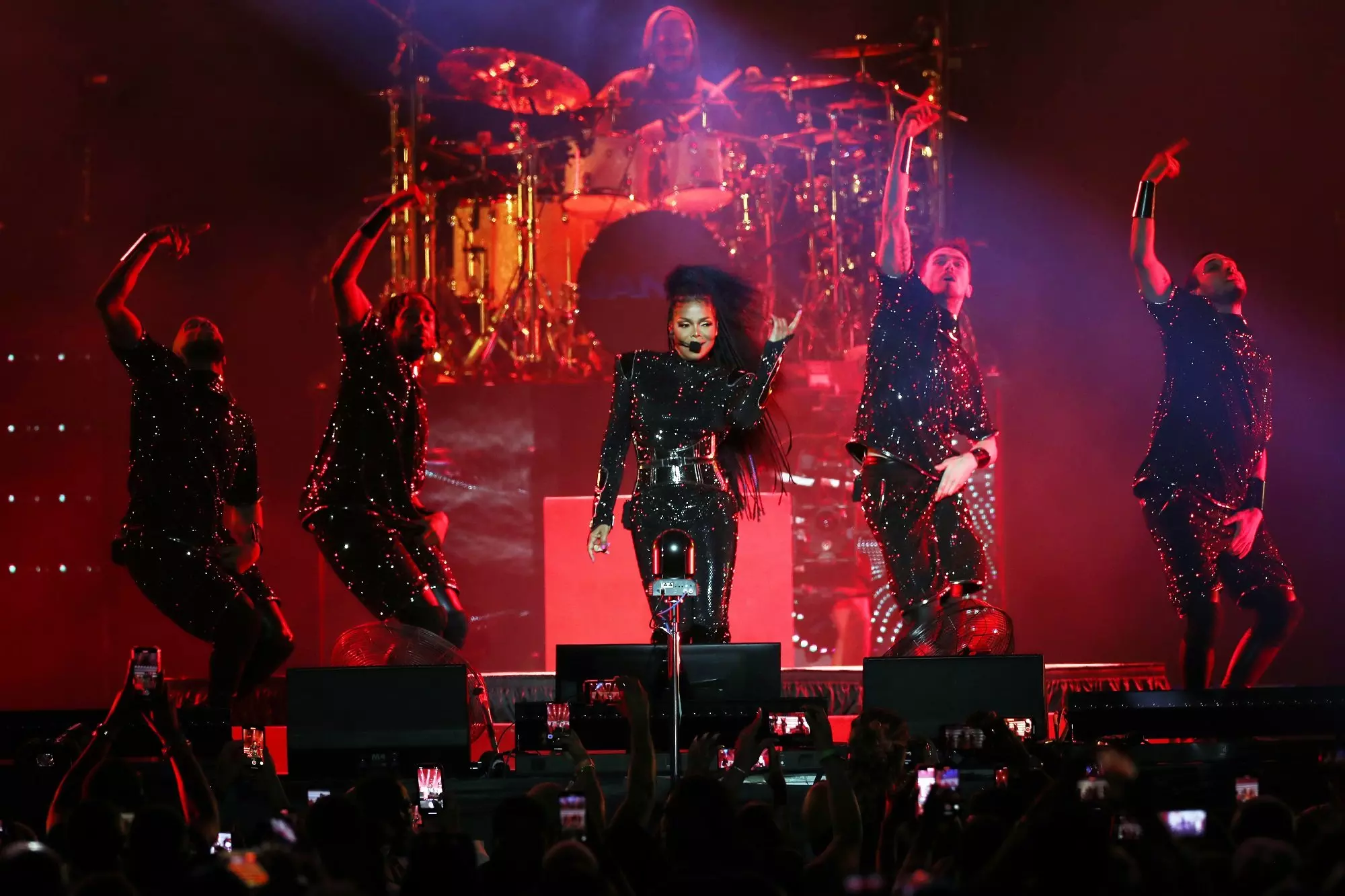
Celebrating 30 Years Of Essence Fest: How New Orleans & Multi-Generational, Diasporic Talent Create The "Super Bowl Of Culture"
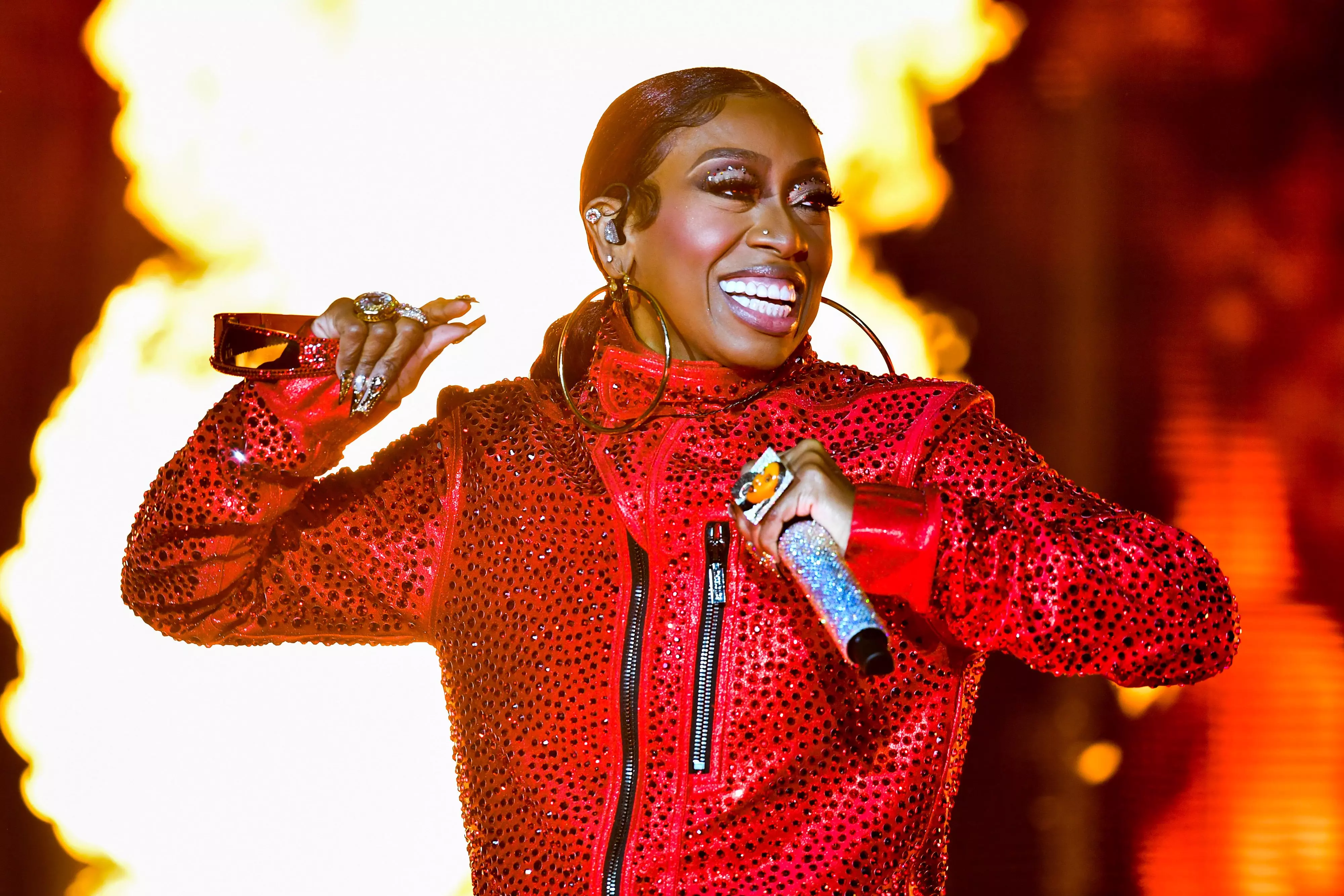
Celebrating Missy Elliott: How The Icon Changed The Sound, Look & Language Of Hip-Hop

Tekno Talks New Music, Touring America & His "Elden Ring" Obsession
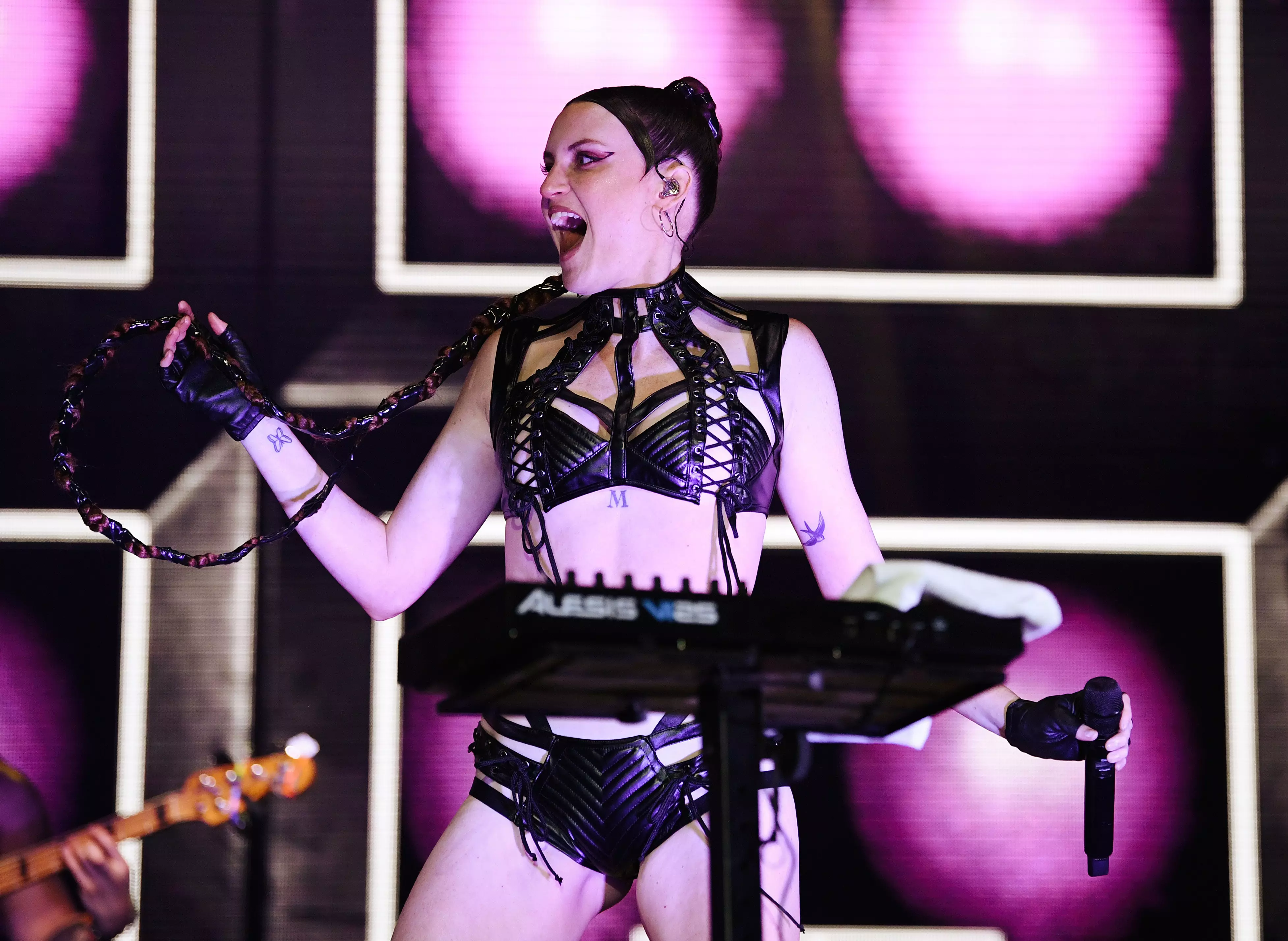
5 LGBTQIA+ Record Labels To Check Out: Get Better Records, So Fierce! And Others
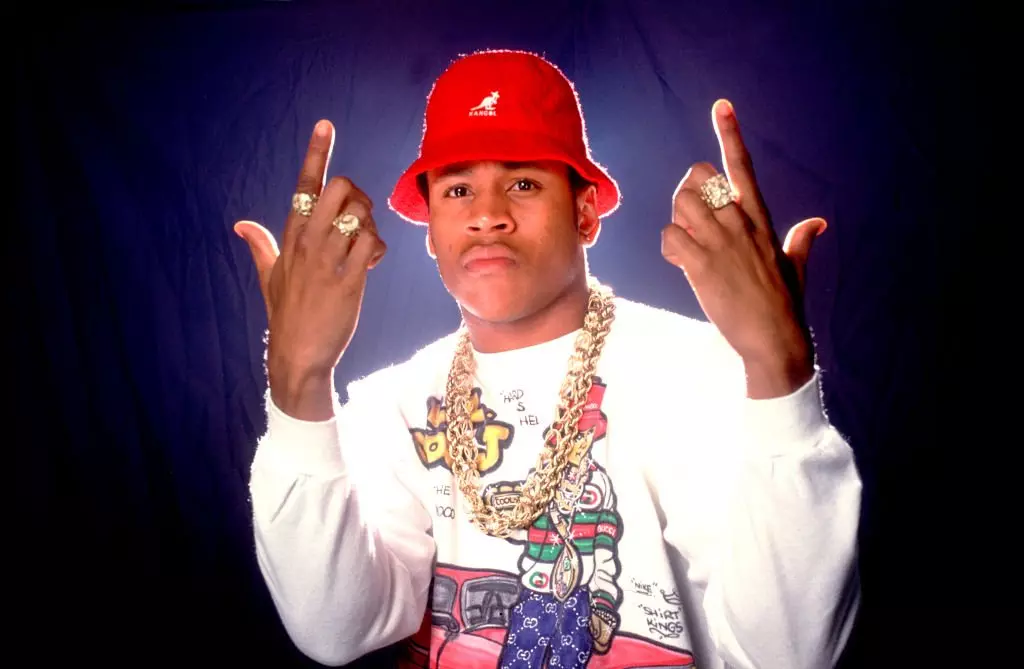
Celebrate 40 Years Of Def Jam With 15 Albums That Show Its Influence & Legacy
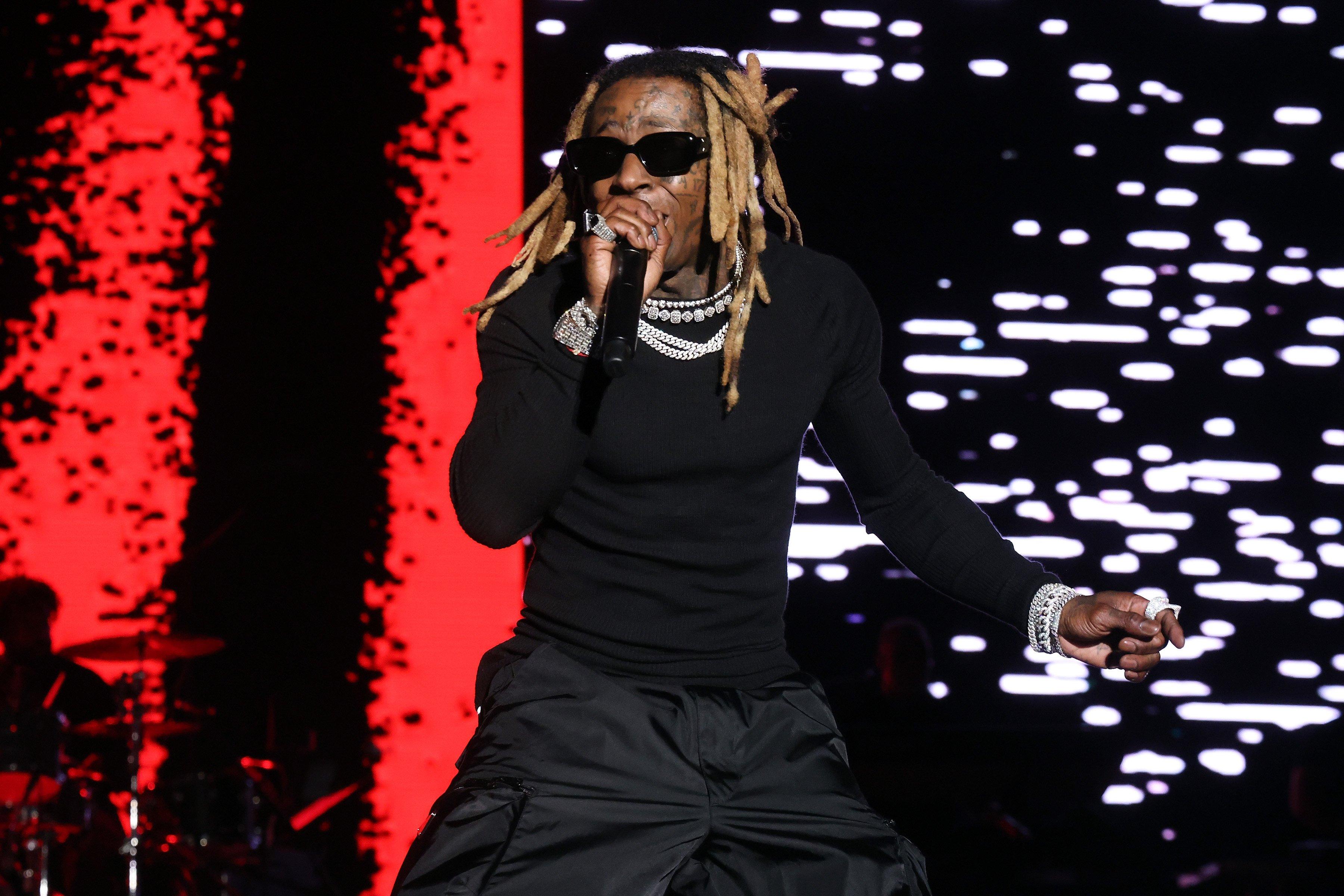
Photo: Taylor Hill/Getty Images for Live Nation Urban
list
9 Lively Sets From The 2024 Roots Picnic: Jill Scott, Lil Wayne, Nas, Sexyy Red, & More
From hit-filled sets by The-Dream and Babyface to a star-studded tribute to New Orleans, the 2024 iteration of the Roots Picnic was action-packed. Check out a round-up of some of the most exciting sets here.
As June kicked off over the weekend, The Roots notched another glorious celebration at West Philadelphia's Fairmount Park with the 16th annual Roots Picnic. This year's festival featured even more activations, food vendors, attendees, and lively performances.
On Saturday, June 1, the action was established from the onset. October London and Marsha Ambrosius enlivened the soul of R&B lovers, while Method Man and Redman brought out surprise guests like Chi-town spitter Common and A$AP Ferg for a showstopping outing.
Elsewhere, rappers Smino and Sexyy Red flashed their St. Louis roots and incited fans to twerk through the aisles of the TD Pavilion. And Philly-born Jill Scott's sultry vocals made for a memorable homecoming performance during her headlining set.
The momentum carried over to day two on Sunday, June 2, with rising stars like Shaboozey and N3WYRKLA showing the Roots Picnic crowd why their names have garnered buzz. Later in the day, rapper Wale brought his signature D.C. swag to the Presser Stage. And while Gunna's performance was shorter than planned, it still lit the fire of younger festgoers.
Closing out the weekend was a savory tribute to New Orleans courtesy of The Roots themselves, which also starred Lil Wayne, acclaimed R&B vocalists, an illustrious jazz band, and some beloved NoLa natives.
Read on for some of the most captivating moments and exciting sets from the 2024 Roots Picnic.
The-Dream Serenaded On The Main Stage
The-Dream | Taylor Hill/Getty Images for Live Nation Urban
After years away from the bright lights of solo stardom, The-Dream made a triumphant return to the festival stage on Saturday. The GRAMMY-winning songwriter and producer played his timeless R&B hits like "Falsetto" and "Shawty Is Da S––," reminding fans of his mesmerizing voice and renowned penmanship.
His vocals melted into the sunset overlooking Fairmount Park Saturday evening. And even in moments of audio malfunctions, he was able to conjure the greatness he's displayed as a solo act. Although, it may have looked easier than it was for the Atlanta-born musician: "Oh, y'all testing me," he said jokingly.
The-Dream slowed it down with the moodier Love vs. Money album cut "Fancy," then dug into the pop-funk jam "Fast Car" and the bouncy "Walkin' On The Moon." He takes fans on a ride through his past sexual exploits on the classic "I Luv Your Girl," and closes on a fiery note with the "Rockin' That S—." While even he acknowledged that his set wasn't perfect, it left fans hoping to see more from the artist soon.
Smino Rocked Out With His Philly "Kousins"
Smino | Shaun Llewellyn
Despite somewhat of a "niche" or cult-like following, Smino galvanized music lovers from all corners to the Presser Stage. The St. Louis-bred neo-soul rapper played silky jams like "No L's" and "Pro Freak" from 2022's Luv 4 Rent, then dove into the sultry records from his earlier projects.
"Klink" set the tone for the amplified showcase, with fans dancing in their seats and through the aisles. His day-one fans — or "kousins," as he lovingly refers to them — joined him on songs like the head-bopping "Z4L," and crooned across the amphitheater on the impassioned "I Deserve."
Under Smino's musical guidance, the crowd followed without a hitch anywhere in the performance. It further proved how magnetic the "Netflix & Dusse" artist is live, and how extensive his reach has become since his 2017 debut, blkswn.
Nas Took Fans Down Memory Lane
Nas | Taylor Hill/Getty Images for Live Nation Urban
The New York and Philadelphia connection was undeniable Saturday, as legendary Queensbridge MC Nas forged the two distinctive cities for a performance that harnessed an "Illadelph State of Mind."
The "I Gave You Power" rapper played his first show in Philadelphia as a teenager, when he only had one verse under his belt: Main Source's 1991 song "Live at the BBQ." Back then, Nas admitted to underplaying the city's influence, but he knew then what he knows now — "I had to step my s— up." And he did.
The rapper played iconic songs like "Life's a B–" and "Represent" from his landmark debut Illmatic, which celebrated 30 years back in April. He even brought out Wu-Tang Clan's Ghostface Killah to add to the lyrical onslaught, and played records like "Oochie Wally" and "You Owe Me" to enliven his female fans.
Sexyy Red Incited A Twerk Fest
Sexyy Red | Frankie Vergara
Hot-ticket rapper Sexyy Red arrived on the Presser Stage with a message: "Make America Sexyy Again." And as soon as Madam Sexyy arrived, she ignited a riot throughout the TD Pavilion aisles. Twerkers clung onto friends and grasped nearby railings to dance to strip club joints like "Bow Bow Bow (F My Baby Dad)" and "Hood Rats."
Red matched the energy and BPM-attuned twerks from her fans, which only intensified as her lyrics grew more explicit. Sexyy encouraged all of the antics with a middle finger to the sky, her tongue out, and her daring lyrics filling the air. Songs like "SkeeYee" and "Pound Town" added to the nonstop action, leaving fans in a hot sweat — and with their inner sexyy fully unlocked.
Jill Scott Delivered Some Homegrown Magic
Jill Scott (left) and Tierra Whack | Marcus McDonald
To close out night one, the Roots Picnic crowd congregated at the Park Stage for a glimpse of Philadelphia's native child, Jill Scott. The famed soulstress swooned with her fiery voice and neo-soul classics like "A Long Walk" and "The Way." Fans swayed their hips and sang to the night sky as Scott sprinkled her musical magic.
Scott, wrapped up in warm, sapphire-toned garments, was welcomed to the stage by Philadelphia Mayor Cherelle L. Parker. The newly elected official rallied the audience for a "Philly nostalgic" evening, and the GRAMMY-winning icon delivered a soaring performance that mirrored her vocal hero, Kathleen Battle. "Philadelphia, you have all of my love," Scott gushed. "I'm meant to be here tonight at this Roots Picnic."
"Jilly from Philly" invited some of the city's finest MCs to the stage for the jam session. Black Thought rapped along her side for The Roots' "You Got Me," and Tierra Whack stepped in for the premiere of her and Scott's unreleased rap song, a booming ode to North Philly.
Fantasia & Tasha Cobbs Leonard Brought Electrifying Energy
Fantasia | Taylor Hill/Getty Images for Live Nation Urban
Led by the musical maestro Adam Blackstone, singers Tasha Cobbs Leonard and Fantasia set the warmness of Sunday service and their Southern flare with a "Legacy Experience." And as the title of the performance suggests, their fiery passion was a thread of musical mastery.
As fans danced across the lawn, it was just as much a moment of worship as it was a soulful jam — and only the dynamic voices of the two Southern acts could do the job. "Aren't y'all glad I took y'all there this Sunday," Blackstone said.
The sanctity of Tasha Cobbs Leonard's vocals was most potent on "Put A Praise On It," and Fantasia's power brought the house down even further with classics like "Free Yourself" and "When I See U."
"I wasn't supposed to come up here and cut. I'm trying to be cute," Fantasia joked after removing her shoes on stage. The North Carolina native's lips quivered and her hands shook in excitement, as she continued to uplift the audience — fittingly closing with a roaring rendition of Tina Turner's "Proud Mary."
Babyface Reminded Of His Icon Status
Babyface | Marcus McDonald
There are few artists who could dedicate a full set to their own records, or the hits they've penned for other musicians. And if you don't know how special that is, Babyface won't hesitate to remind you. "I wrote this back in 1987," he said before singing the Whispers' "Rock Steady."
Throughout the legendary R&B singer's 45-minute set, he switched between his timeless records like "Every Time I Close My Eyes" and "Keeps on Fallin'," and those shared by the very artists he's inspired — among them, Bobby Brown's "Don't Be Cruel" and "Every Little Step,"
Fans across several generations gathered to enjoy the classic jams. There was a look of awe in their eyes, as they marveled at the work and memories Babyface has created over more than four decades.
André 3000 Offered Layers Of Creativity
André 3000 | Marcus McDonald
Speculation over what André 3000 would bring to his Sunday night set was the buzz all weekend. Fans weren't sure if they were going to hear the "old André," or the one blowing grandiose tones from a flute on his solo debut, 2023's New Blue Sun.
The former Outkast musician went for the latter, and while some fans were dismayed by the lack of bars, hundreds stayed for the highly rhythmic set. "Welcome to New Blue Sun live," André said. The majestic chimes and flowy notes of his performance reflect a new creative outlook, and as the performance went on, there was a cloud of coolness that loomed over the amphitheater.
His artistic approach is new to many fans, but he never stopped showcasing the personality they have grown to love. After delivering a message in an indistinguishable language, he panned to the crowd with a look of deep thought and said, "I just want y'all to know, I made all that s— up." It's the kind of humor fans have admired from him for decades, and moments like those are one of many reasons they stayed to watch the nuances of the MC's set.
Lil Wayne & The Roots Gave New Orleans Its Magnolias
Trombone Shorty (left) and Black Thought | Taylor Hill/Getty Images for Live Nation Urban
The sound of jazz trombones and the gleam of Mardi Gras colors transported West Philly to the bustling streets of New Orleans for the closing set of Roots Picnic 2024. The ode to the Big Easy featured natives like Lloyd, PJ Morton and the marvelous Trombone Shorty, all of whom helped deliver a celebratory tribute that matched the city's vibrance.
Lloyd floated to the stage singing The Roots' "Break You Off," and delved into his own catalog with "Get It Shawty" and "You." Morton soon followed with a soulful run of his R&B records, including "The Sweetest Thing" and "Please Be Good."
With anticipation on full tilt, Black Thought welcomed the festival closer to the stage with a message: "It's only right if Philly pays homage to New Orleans that we bring out Lil Wayne." And right on cue, Wayne drew a wave of cheers as he began "Mr. Carter."
Wayne strung together his biggest Billboard-charting and street hits, including "Uproar," "Hustler's Muzik" and "Fireman." The performance was a rousing cap-off to the weekend — and it clearly meant a lot to the rapper to rep his city in such grand fashion.
"This is a dream come true," Wayne said. "It's a motherf–ing honor."
11 New Music Festivals To Attend In 2024: No Values, We Belong Here & More
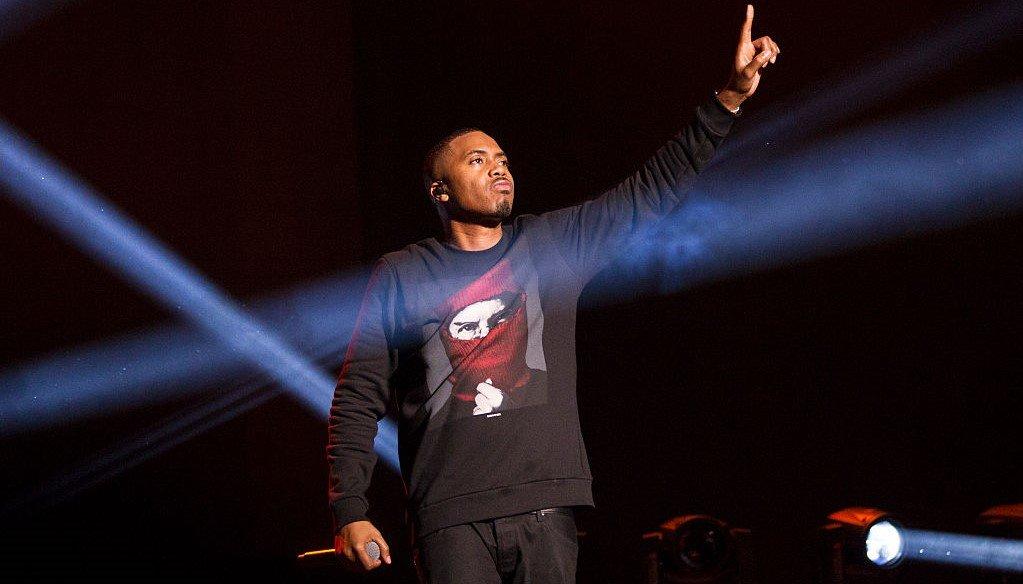
Photo: Kimberly White/Getty Images for Hennessy
feature
How 'Illmatic' Defined East Coast Rap: Nas’ Landmark Debut Turns 30
Three decades after Nas released his debut album, 'Illmatic' remains the holy grail of East Coast rap. From poetic, pulled-from-life lyrics to its all-star cast of producers, learn how 'Illmatic' reignited New York’s rap supremacy in the mid-1990s.
After shaking up the rap game with a breakout verse on the Main Source’s "Live at the Barbeque," a 17-year-old, chip-toothed MC named Nasir "Nas" Jones was crowned a prophet. His silk-smooth delivery and poetic rhymes on the 1991 jam were reminiscent of hip-hop greats like Kool G Rap and Rakim.
The verse — which included the line "Verbal assassin, my architect pleases. When I was 12, I went to hell for snuffin’ Jesus" — bestowed heavy expectations on the Queens native. While Nas was discovered by Main Source’s Large Professor, the young MC was soon drawing the attention of music label heads who wanted to ink a deal with the emerging artist.
"I must have rewinded that [verse] like a hundred times," former 3rd Bass rhymer MC Search said in the 2014 documentary Nas: Time Is Illmatic. "This Main Source album is brilliant, but who’s that kid? It almost felt like within a week, everybody wanted to know who that guy was."
Through Nas’ connection with Search, he found a home at Sony Music’s Columbia, and notched another memorable verse on 1992’s "Back To The Grill." But on April 19, 1994, Nas delivered the greatest debut in rap history: Illmatic.
Thirty years later,. Nas’ masterful stroke of poeticism and the gritty boom-bap loops on songs "It Ain’t Hard to Tell," "The World Is Yours," and "N.Y. State of Mind" still resonate. The album also revived the fleeting dominance of NY rap, and unexpectedly inspired other rappers to release albums with their baby pictures on the cover. Its influential power, and the amalgam of musical forces that threaded the album together, made Illmatic one of the definitive East Coast rap albums of the golden age. Few hip-hop albums have been as widely heralded for as long as Illmatic.
The landmark project chronicled Nas’ life growing up in the Queensbridge housing projects while helping restore the influence of East Coast rap on a now bicoastal scene. By '94, the West coast was taking the reins for the first time in the genre’s history. In Southern California, Dr. Dre’s The Chronic and Snoop Dogg’s Doggystyle popularized G-funk, which soon permeated the airwaves and topped the Billboard charts. Alternative West Coast acts like Oakland's Souls of Mischief and South Central's the Pharcyde were also establishing firm ground.
The mecca of hip-hop was no longer atop the leaderboard, but with his first full-length release, Nas was inspired to reclaim New York’s dominance and rekindle Queenbridge’s spark from the late 1980s. "I had to represent," Nas said in a 2019 interview with Drink Champs. "The pressure was on the borough and my project. And just getting into the game, you had to have something to say, so I definitely had to push the pen hard because, if not, it would’ve never [flown]."
Queensbrige is home to the largest housing project in the U.S., and birthed pioneers like MC Shan, Marley Marl, and the fearsome Juice Crew. They fell to South Bronx’s KRS-One and the Boogie Down Productions collective in the infamous "Bridge Wars," which left the Long Island City section seeking a new heir. And Nas, inspired by the lyrical warfare, took up the mantle.
Nas and Large Professor hired legendary producers DJ Premier, Pete Rock, Q-Tip, L.E.S, and others to work on Illmatic. They set the sonic lines, and Nas filled the gaps in spoken word form.
Read more: A Guide To New York Hip-Hop: Unpacking The Sound Of Rap's Birthplace From The Bronx To Staten Island
From their first studio session together, Q-Tip knew Nas’ skills were unlike any other he’d seen before. "You automatically knew," the A Tribe Called Quest legend (and fellow son of Queens) said in an interview with Red Bull Music Academy. "When Large Professor first played him for me, I heard him on the Live at the Barbeque,’ but then Large [Professor] played me his s— and I was like, ‘This dude is crazy, you know what I’m saying?’ I knew it was going to be the impact it was."
The project was a storybook of lived experiences, even down to the iconic album cover. Nas peeled back the layers of street violence, mass incarceration, and generations of disenfranchisement throughout the 10-track LP. "Memory Lane (Sitin’ in da Park)" and "One Time 4 Your Mind" transported listeners to the hardened corners of Queens, where the air was filled with marijuana smoke and the distant whispers from street hustlers.
On the Tri-State anthem "N.Y. State of Mind," Nas’ creative equilibrium was at full balance. In Time Is Illmatic, Nas said the song’s early placement on the LP was intentional. He knew it would "bring [listeners] to hell and back."
"One Love" captured the pain of incarceration, with Nas’ descriptive story of distrust and heartbreak overlaying a chillingly euphoric beat. The AZ-assisted "Life’s a Bitch" is a celebratory toast to survival, and "It Ain’t Hard to Tell" is a masterful showcase of braggadocious rap.
The topics that I talk about were topics that were around before ‘Illmatic’; streets, social economic status, people’s struggles," Nas told Clash magazine. "I just told it crazy real, and it just talks about how to live in the circumstances and goes beyond, dreaming at the same time. Never just stay in the situation that you’re in."
The album was showered with praise upon release, with the Source blessing the album with a highly-coveted five-mic review. The rare score was administered by former Hot 97 radio personality and then-Source intern Minya Oh, who declared it one of the best albums she had ever heard. "Lyrically, the whole s— is on point. No cliched metaphors, no gimmicks. Never too abstract, never superficial."
The rave responses didn’t initially translate to album sales. Ilmatic debuted at No. 12 on the Billboard 200, only selling around 60,000 copies in its first week. The low sales were attributed to pre-Internet leaks, with renderings of Illmatic in circulation up to a year before its official release date, according to Clash. The standout singles also failed to scratch the charts.
Illmatic eventually sold more than two million copies, but the underwhelming start surprised DJ Premier. "We knew it was going to be that big of a deal, that’s why I never understood why it didn’t go like super platinum quick," Premier said to Mass Appeal. "I thought it was going to be super fast and it didn’t. I thought this one was going to be a big platinum album."
But three decades after its release, Illmatic influenced several generations of rap stars and retained its status as one of the best albums in rap history. In 2020, Rolling Stone ranked the album no. 44 on its list of the 500 greatest albums of all time.
Large Professor, who continued to work with Nas on later albums, said Illmatic is a pillar of hip-hop history. "It’s one of the roots of the tree of hip-hop because a lot of styles came from that. A lot of rhyme styles. He got people thinking outside of the norm," the producer said to HipHopDX in 2014. The stuff that he was rhyming was just crazy, man. But, it’s definitely one of the roots that hold the tree of hip-hop up strong."
Nas’ contributions has placed him among the best MCs of all time, and justifiably so. He’s continued to deliver No. 1 albums and hit singles throughout the decades, and scored his first GRAMMY Award for Best Rap Album in 2021 after more than a dozen nominations.
While Nas no longer listens to Illmatic and avoids celebrating the project, telling Haute Living that it’s "corny" to continue championing one album when he’s done so many others. But fans’ continued admiration for the album proves that his early goals were met. The reputation of East Coast rap and Queensbridge was restored, and Nas’ legacy will forever be immortalized. Mission accomplished, Esco.
'Run-DMC' At 40: The Debut Album That Paved The Way For Hip-Hop's Future
